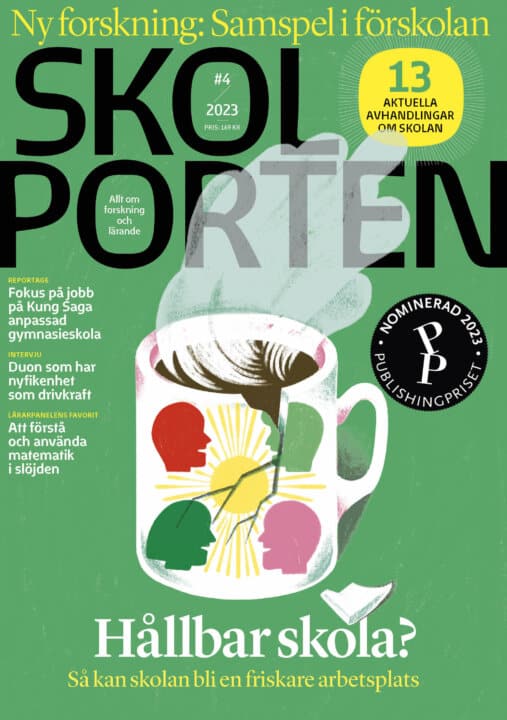Virtual patients in nursing education : teaching, learning and assessing clinical reasoning skills
Carina Georg
Professor Elisabet Welin, Karolinska Institutet Docent Maria Jirwe, Karolinska Institutet Klas Karlgren, Karolinska Institutet Johanna Ulfvarson, Karolinska Institutet
Lars Henningsohn, Karolinska Institutet
Karolinska Institutet
2019-01-11
Virtual patients in nursing education : teaching, learning and assessing clinical reasoning skills
Institutionen för lärande, informatik, management och etik
Abstrakt
Teoriförankrade virtuella patienter är lämpliga att använda vid undervisning och bedömning av kliniskt resonemang i sjuksköterskeutbildningen. Det visar Carina Georgs avhandling.
Virtual patients in nursing education : teaching, learning and assessing clinical reasoning skills
This thesis aims to increase knowledge about how to design virtual patients for the use of teaching and learning clinical reasoning for nursing students and how to assess different aspects of nursing students’ competence regarding clinical reasoning in encounters with virtual patients.
Method: Study I investigated which aspects of clinical reasoning should be present in a virtual patient model and how that model should be presented as a learning activity. The Outcome – Present State – Test (OPT) model was chosen as a theoretical foundation for the development of a virtual patient model. A multidisciplinary team used an iterative approach to design the virtual patient model and virtual patient cases based on the OPT model. Study II investigated nursing students’ experiences of using virtual patients based on the model developed in study I. A quantitative-qualitative content analysis utilising the text analysis program Gavagai Explorer was performed. The focus of study III was to develop an assessment rubric aimed at assessing nursing students’ clinical reasoning skills in encounters with virtual patients. The Lasater Clinical Judgement Rubric (LCJR), based on the conceptual framework of Tanner’s clinical judgment model, was chosen to serve as a model for developing a new rubric. The method for developing the new rubric was a combination of qualitative deductive content analysis and abductive analysis. The focus of study IV was to determine the psychometric properties of the virtual patient version of the rubric developed in study III. The psychometrics of the rubric were examined using exploratory factor analysis.
Findings: In study I, the virtual patient Design Nursing Model (vpDNM) which aimed to provide a structure for teachers when authoring virtual patients intended for nursing education was developed. Study II identified seven topics reflecting students’ experiences of using virtual patients in the context of learning activities, and four topics relating to the context of assessment were identified. Overall, students seemed to value virtual patients’ ability to visualise clinical reasoning. In study III, a rubric called the virtual patient version of LCJR (vpLCJR), which aimed to assess nursing students’ clinical reasoning competences in encounters with virtual patients was developed. Study III, showed that the vpLCJR can be used for a structured assessment of nursing students’ clinical reasoning in encounters with virtual patients. The results show that the rubric has the ability to capture both levels and progress of students’ clinical reasoning.
Conclusions: A conclusion based on the results of studies I and II presented in this thesis is that virtual patients based on the virtual patient design model are well suited for teaching, learning and assessing nursing students’ clinical reasoning skills. Using theory-anchored virtual patients adapted for nursing education could support students in their development of clinical reasoning by making thinking strategies and tactics used in reflective clinical reasoning more explicit. Virtual patients can also be used for teaching and learning in connection with the documentation of patient care and the accurate use of standardised terminologies in patient records. Furthermore, the results also propose that a virtual patient based on the virtual patient Design Nursing Model is well suited to be used in formative and summative assessment, as well as for students’ self-assessment. A conclusion based on the results of studies III and IV is that the developed rubric can be used to assess different aspects as well as the levels and progress of nursing students’ clinical reasoning. Furthermore, the vpLCJR provides both students and educators with a defined set of performance criteria. The results also suggest that the vpLCJR is a valid and reliable assessment instrument for nursing students’ clinical reasoning in encounters with semi-linear virtual patients.
Relaterade länkar

Undervisa i artificiell intelligens
 Gy–Vux
Gy–Vux 







